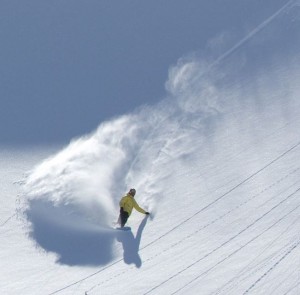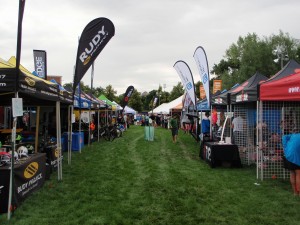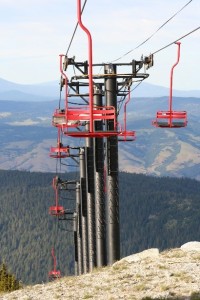Our monthly roundup of research insights for the recreation and tourism industries
Ski Area Business News

Several articles have crossed our desks recently regarding the business of ski areas in the US. The Denver Post noted in a recent article regarding rent payments from Colorado ski areas that operate on US Forest Service land reaching record highs in the 2013/14 season. The most noteworthy finding of that article was that the rent payments for every area operating on federal land increased over the 2012/13 season (when all but three ski areas saw their payments rise), indicating the widespread level of success of these ski areas in Colorado. While the largest resorts have the biggest rent payments to the federal government, smaller ski areas, like Monarch and Arapahoe Basin, were noted as having also seen their rent, and therefore revenue, increase. This indicator is a sign of the overall positive health of the ski resort industry in Colorado.
Also, CNL Lifestyle Properties is evaluating options for 16 properties from its portfolio of over 20 different mountain resort properties across the country, including sales of the properties, a private buyout, or listing on a public exchange. CNL previously announced agreements to sell its golf properties and senior housing, and is also reported to be evaluating exit strategies for its theme parks and marinas, as the REIT nears the end of its planned lifespan. The ski areas owned by CNL tend to be medium-sized ski areas often close to large market areas, such as Brighton (Salt Lake City), Summit at Snoqualmie (Seattle), Mountain High (Los Angeles), and Mount Sunapee (Boston). As a REIT, CNL is the owner of the asset but leases the operations of the ski areas to a separate entity – often the prior ownership or management group. Is this a good time to be selling ski areas? We’ll keep an eye on potential suitors for the ski area component of the portfolio and what the sale price says about the underlying value of the assets.
Finally, a fresh crop of season passes is out for the 2015/16 season. A new entrant is the M.A.X. pass, which combines ski areas from three companies: Boyne, Intrawest, and Powdr. While not a season pass, the M.A.X. pass provides 5 days at each of 22 ski areas across the country. Continuing its evolution, the Mountain Collective pass added Sun Valley to its stable of iconic, independent ski areas across the Western US and Canada. However, an established leader in the field remains the Epic Pass, offering access to the spectrum of Vail Resorts properties. Collectively, these pass products give consumers options and incentives to try new and different ski areas, and their commitment represents an important cash-flow insurance policy and marketing opportunity for the ski resorts.
Evaluation of Special Events
Events have become a cornerstone of Colorado tourism in winter and summer alike. Ranging from the 2015 F.I.S. World Alpine Ski Championships with a world-wide television audience, to long-established traditions like the Telluride Bluegrass Festival, to summer-long cultural programs, sports tournaments, food festivals, and countless others, the offerings and impacts vary widely. Given the levels of subsidy and support that some events receive, careful scrutiny of the economic and fiscal impacts of these programs is often warranted, as well as a solid understanding of the attendee profile and satisfaction.

The tools for event evaluations have become progressively more refined and it is possible for communities, DMO’s, resort operators and other entities to create powerful measures for evaluating a single event, or benchmarking and comparing events over time. As we look to the summer season, it is a good time for organizations to consider whether they have the right tools in place to understand and quantify the impacts of events in their locale.
RRC has refined a variety of techniques for evaluating events. There are several important measures that are truly fundamental to understanding events. These include:
- The visitation or attendance at the event(s). Evaluations must begin with accurate visitation estimates. Obviously, for a ticketed event this information is easily obtained. For a sports events with a mix of registered and unregistered attendees, for example youth soccer or softball tournaments, the estimates are more difficult but still relatively straightforward to conduct. Large free concerts, races that have far flung spectators, or ungated food festivals pose greater challenges. In all cases, an appropriate technique can be identified and the attendance counts become a critical variable in accurate evaluations.
- How important was the event in the decision to visit? This critical measure usually requires some form of visitor survey. It is important to understand whether an event is drawing incremental visitation, or simply providing an activity for visitors who would have come anyway. If the event attracts new visitors it serves one purpose; on the other hand if it is providing entertainment for visitors already in town it serves a different role. Either objective can be a positive for a community, but it is important to create measures to truly understand the role of the event to attendees.
- Visitor demographics and trip characteristics. Requiring a survey, these questions help to characterize key aspects of attendee profile and the nature of their visit.
- Visitor spending in conjunction with the event. This too typically requires some form of survey of attendees. Ideally, visitors would be asked to describe their spending during the event period.
This measure would differentiate lodging spend, from food and beverage, retail, recreation (lift tickets), etc. Taken as a whole, this data allows the true economic impact of the event to be understood.
While there are a number of additional questions that can be asked on events-related surveys, the topics summarized above are critical. We at RRC encourage careful planning and evaluation of events. It is only with accurate and systematically obtained data that the true impacts of events, both economic and other, can be known and understood.
Millennial Research
We have been hearing a lot lately about the Millennial generation – their habits, patterns, preferences, and desires. It seems like nearly every day there is an article about a study, a report, a survey, or a datapoint related to young adults aged 18 to 34. If you believe everything you read, Millennials are addicted to technology, have massive college debt, still live with their parents, and aren’t getting married. How can marketers of destinations and resorts sift through all this information to decide what is relevant and what is just noise?
RRC is working with several clients, including NSAA, on studying young adults and getting their perspective on these and other topics. We have been doing one-on-one interviews, online surveys, and secondary research to help marketers and decision makers better reach young adult customers. Many of the trends and preferences we are finding about Millennials are also increasingly true of many other customers as well. Trends like shorter, more spontaneous trip planning, wanting greater flexibility and options when it comes to lodging, looking for experiences they can share with friends, and seeking unique and fun places to visit are important to many visitors across the age spectrum. Thinking about ways to align your destination with these emerging patterns, through creative marketing and promotions, or just reaching out to the right audience, can make all the difference in making your resort more attractive and successful.
Summer Operations Study

RRC Associates is working in conjunction with NSAA to gain a better understanding of the current and future opportunities for ski areas in the non-winter months. Part of that effort is a survey of ski area managers about their summer operations – what’s working, what’s not, and what’s on the horizon. Building on past research efforts, this survey continues to explore the activities, events, and attractions that have the greatest chance for success. While the right ingredients to a successful summer recipe are different at different resorts, certain commonalities do exist. Past research has shown that mountain coasters, zip lines/canopy tours, ropes/challenge courses, and weddings/family reunions are the most attractive from an ROI standpoint.
Results of the study will be included in articles in the NSAA Journal and presentations at NSAA conferences.
If you haven’t already shared your experience, take the survey today and provide your feedback about summer operations at your ski area.
Upcoming Conferences
Members of the RRC Associates team will be attending the following conferences and meetings over the coming months, typically with a speaking role. Look for us if you are planning to attend!
• Mountain Travel Symposium, Whistler, BC, April 12-18, 2015
• Pacific Northwest Ski Areas Spring Conference & Trade Show, Wenatchee, WA, April 28-30, 2015
• NSAA National Convention and Trade Show, San Francisco, CA, May 3-6, 2015
• Canada West Ski Areas Association Spring Conference, Whistler, BC, April 27-29, 2015
• Colorado Ski Country Annual Meeting, Boulder, CO, June 11, 2015
• Destination Summit, Denver, CO June 9-11, 2015
• NSAA Downhill Bike Park Summit, Winter Park, CO, June 23-24, 2015
